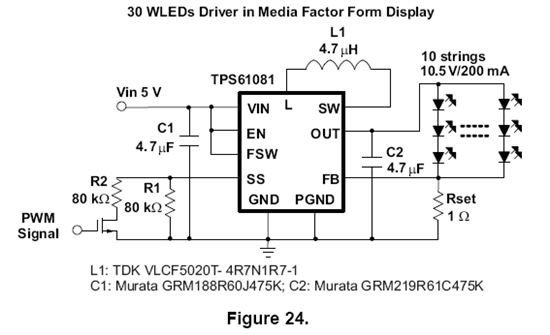Hi,
I am looking for a suitable cost effective backlight driver solution for 7" LCD display which has 8 strings of 3 LED, with all the strings connected in parallel requiring a current of 160mA total @ 9.9V as given below

The circuit has only 3.3V input. Suggest a suitable solution.
Regards,
Sridevi


